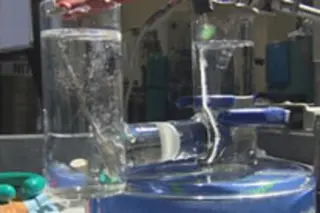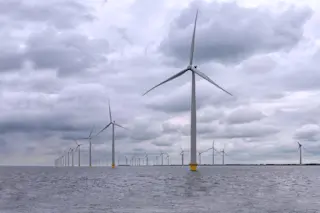Researchers have come up with a cheap and easy process for storing solar energy, in a finding that could provide one of the final elements for efficient solar power systems: the ability to store excess energy in a battery for use later when the sun isn't shining. Researchers are euphoric about their invention, which could mark a great leap forward in solar technology; previous experimental batteries used to store solar energy have been bulky, expensive and inefficient.
“This is the nirvana of what we’ve been talking about for years,” said [lead researcher Daniel] Nocera in the press release. “Solar power has always been a limited, far-off solution. Now we can seriously think about solar power as unlimited and soon” [Christian Science Monitor].
The new technique involves the standard process of electrolysis, in which a current is run through a liquid and used to split apart its chemical components. In this ...














